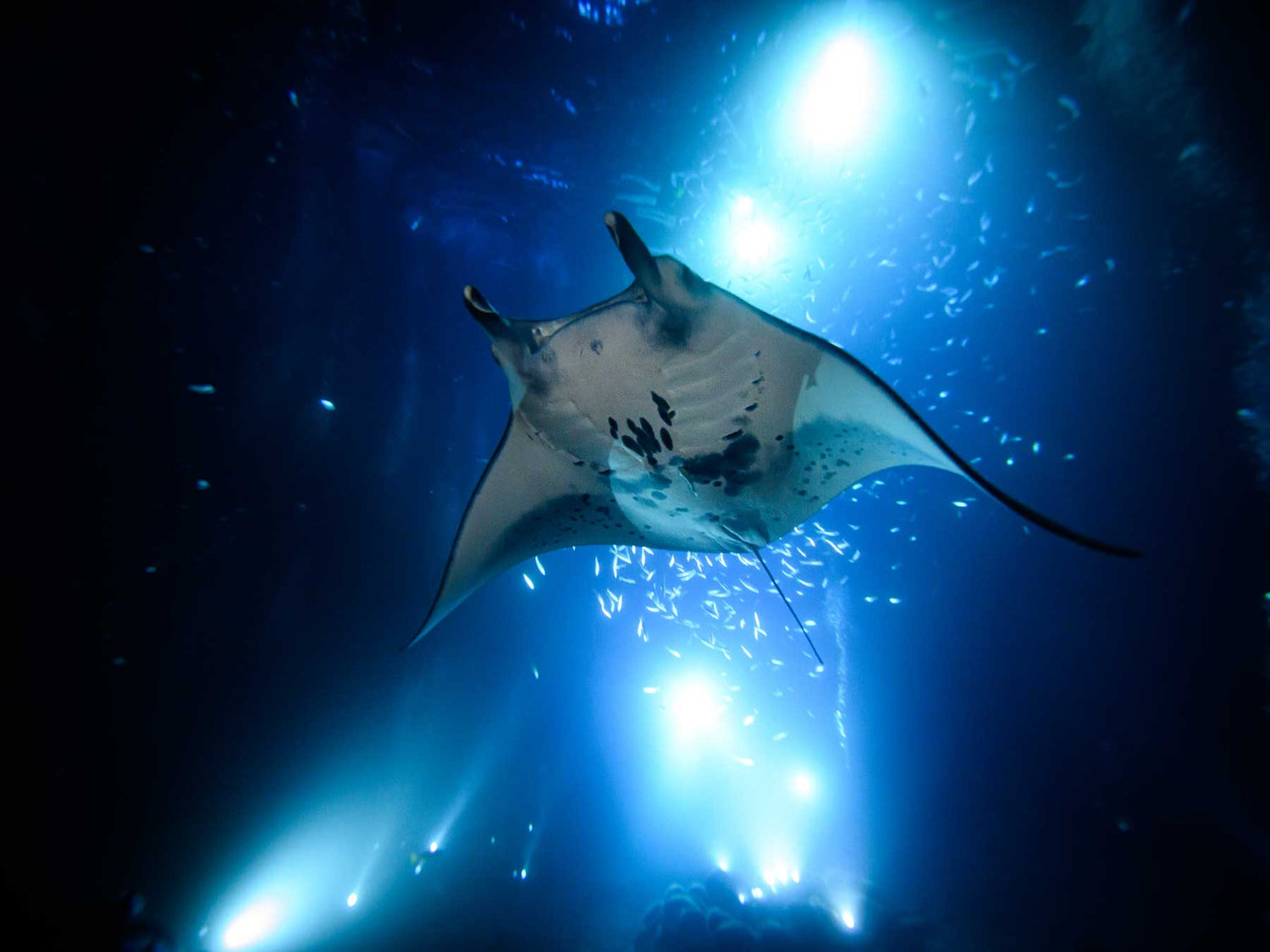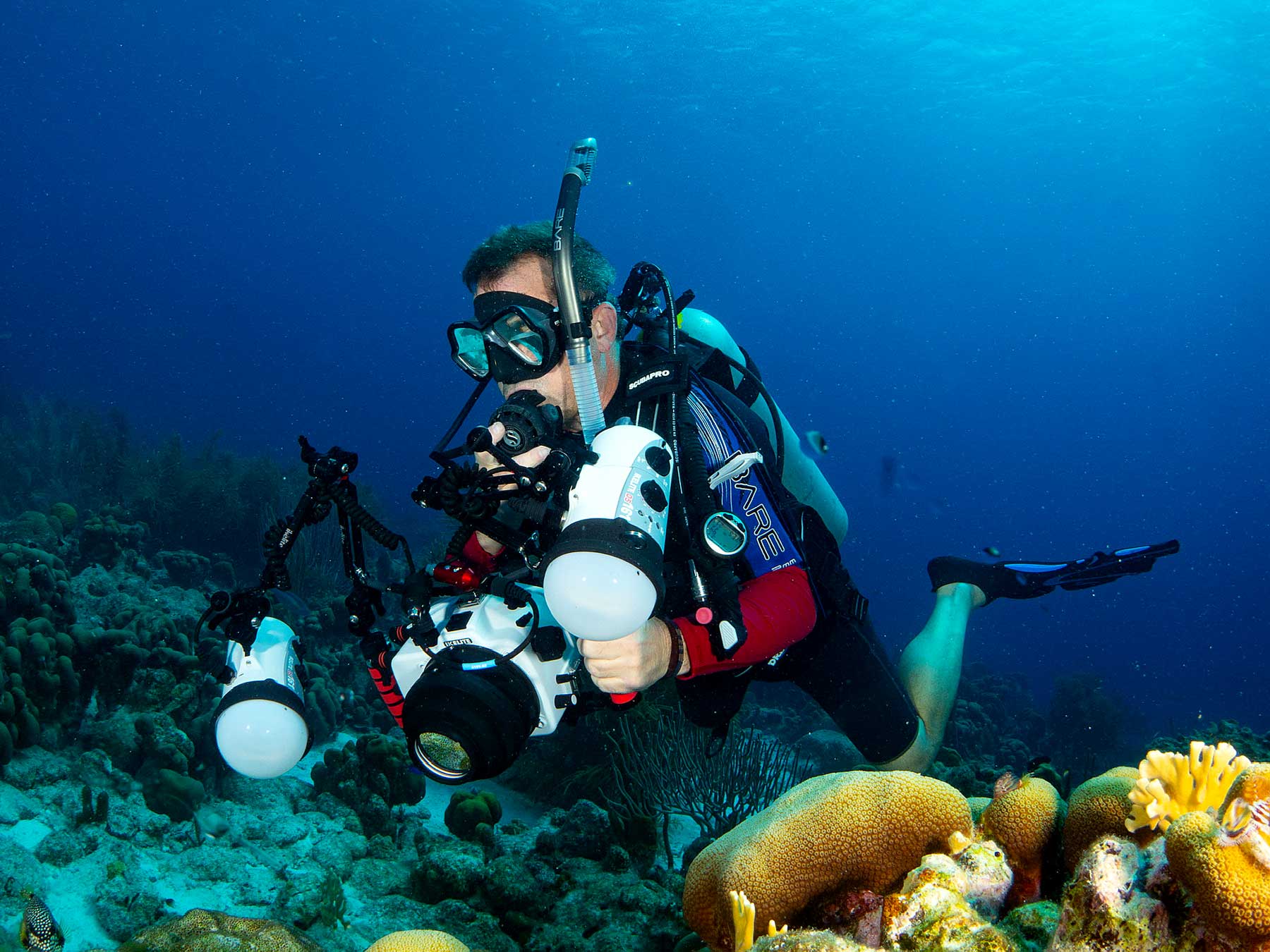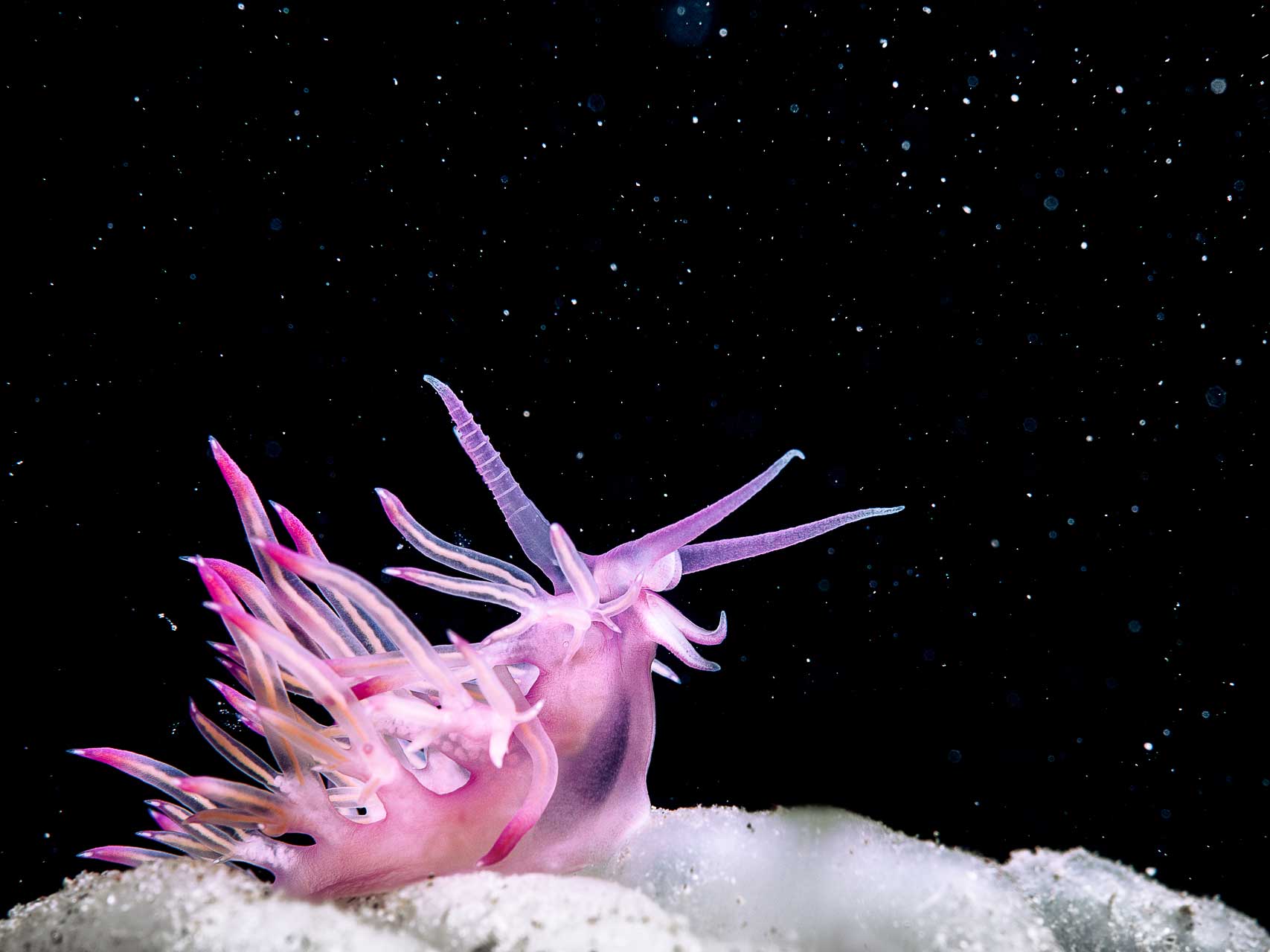By Steve Miller
If you are heading to Hawaii there's no shortage of things to do above, in, and underwater. Consider blocking out one evening for a unique night dive (or snorkel) experience.
Years ago a hotel hung bright lights shining down on the ocean. These lights eventually began attracting manta rays that fed on the plankton. And where there's a congregation of wildlife, the dive guides are never far behind. This led to dive boats going out regularly with fantastic lighting arrays for the sole purpose of attracting the big mantas. It worked great.

At dusk, there is magic light as the boats gather and the sky colors up. You'll have some time to chat and catch the sunset.
Today there could be 20 boats and 200 divers in the water on a busy night.
Don't let those numbers dissuade you, they actually have this worked out beautifully. The divers and boats are spread out over a very large area. Snorkelers hold on to floating light arrays, and divers are settled in the sand around similar arrays on the bottom. The mantas have seen this movie before. They swoop and circle through the pools of light that are now teeming with plankton.
Ideally I’d love to book a private charter and rearrange the lights in different ways for a few hours. But this experience is just in the context of walking on one of the boats at Jack’s Diving Locker in pursuit of some cool images.

Non-divers in your group? The snorkeling experience is just as fun. Snorkelers actually get to see more with mantas coming within a few feet of their array, and the bottom arrays laying below them around 40 feet down.
So how to shoot it? Images we researched from this dive site are pretty distinctive. It's the multiple points of light that make the images so interesting and so different from mantas shot during the day.
Instead of trying to capture an isolated image of a manta portrait, I wanted to use the ambient light from all of the divers and lighting arrays encircling them. Collectively, these lights create the most elaborate lighting system you can imagine, taking dozens of people to power and position. Only here this production is a nightly event.
This made us wonder if we could just shoot "natural light" - no lights or strobes on our housing - with a full frame mirrorless camera like the Nikon Z7.

The white bellies are easy to overexpose with flash (TTL and spot metering recommended). But this manta is catching the light from dive lights to the left and right. It doesn't take a lot of power to expose white at these high ISOs.
We used to refer to any ISO over 800 as “crazy” because noise (graininess and quality loss) is so visible. But that isn’t the case with some of the newer cameras today. ISO 12000 and even 25000 are now practical. It doesn’t come up a lot in underwater photography, but for the Kona night dive it’s a viable choice.
These images are from the Nikon Z7 with Nikon Z 14-30mm f/4 S lens set mostly at 14mm. We had a couple video lights to help draw the Mantas close (every diver carries a light) but pointed them away from the camera's field of view. Every image was captured in full Auto mode, which allows the ISO to vary. In this case it was often around ISO 12000.
Surely you can get great images here with a strobe, but the challenge will be lighting up their big white bellies without losing the ambient light around the scene. It’s an artistic choice.

Slow and steady. Mantas are graceful, and the motion in the image is stopped at shutter speed 1/60. It would be a safer bet to make sure your shutter doesn't go any slower than 1/125 to avoid motion blur.
Lessons learned
In retrospect a better choice would have been to use Shutter priority camera mode with Auto ISO. Setting the camera on full Auto allowed shutter speeds as slow as 1/40, which can leave some motion blur. This is generally not a problem for hand holding, but a bit slow for swimming mantas. Shooting with a fixed shutter speed around 1/125 will fix this.
Any camera with high ISO capabilities can shoot this way. Currently the Sony Alpha A7-series, the Nikon Z-series, or any new full frame mirrorless or DSLR cameras are particularly suited to these “crazy” ISOs.
Heading out to Hawaii and need some advice? Reach out to us and we'll get you sorted out with all the advice you need to come back with great photos!

Pro Tip: The mantas move from array to array like bees to flowers- this includes dive lights. The bigger your light, the closer and more often they come. Point them straight up for best effect, and try to hold it very still.

You can see here how close the mantas will come to the plankton collecting around the lights. Hold very still and they will almost brush against you, but not quite.
All photos copyright © 2020 Steve Miller
 Ambassador Steve Miller has been a passionate teacher of underwater photography since 1980. In addition to creating aspirational photos as an ambassador, he leads the Ikelite Photo School, conducts equipment testing, contributes content and photography, represents us at dive shows and events, provides one-on-one photo advice to customers, and participates in product research and development. Steve also works as a Guest Experience Manager for the Wakatobi Dive Resort in Indonesia. In his "free" time he busies himself tweaking his very own Backyard Underwater Photo Studio which he's built for testing equipment and techniques. Read more...
Ambassador Steve Miller has been a passionate teacher of underwater photography since 1980. In addition to creating aspirational photos as an ambassador, he leads the Ikelite Photo School, conducts equipment testing, contributes content and photography, represents us at dive shows and events, provides one-on-one photo advice to customers, and participates in product research and development. Steve also works as a Guest Experience Manager for the Wakatobi Dive Resort in Indonesia. In his "free" time he busies himself tweaking his very own Backyard Underwater Photo Studio which he's built for testing equipment and techniques. Read more...
Additional Reading
Photographing Giant Mantas in Yap
First Look Nikon Z6, Z7 Mirrorless Underwater Housing













